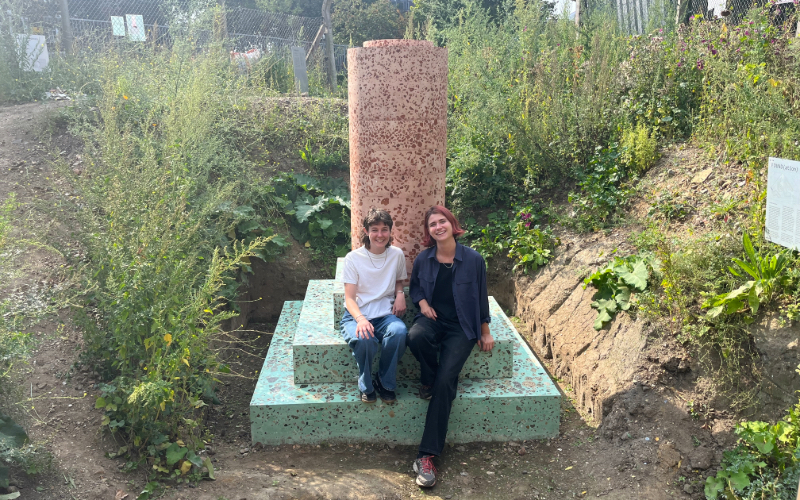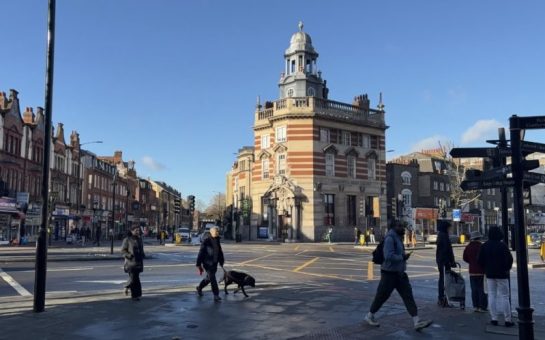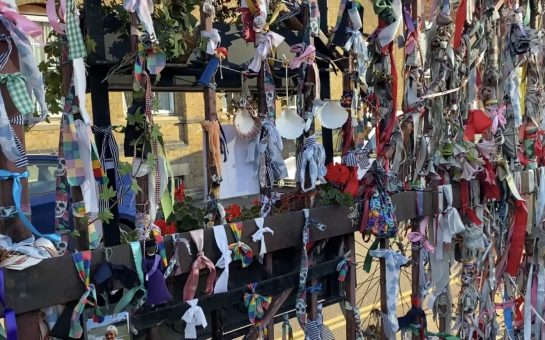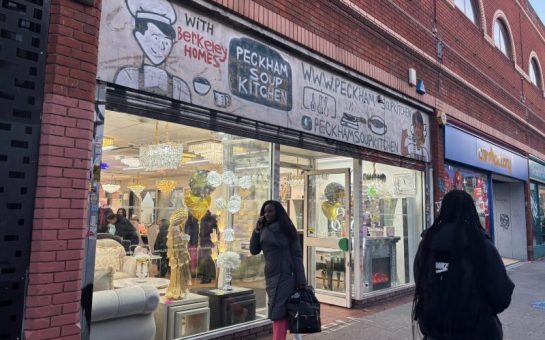A sculpture made to highlight the issues around overconsumption in the building industry has been unveiled to the public in Southwark.
London-based architects, Hannah Sheerin, 27, and Lioba Pflaum, 28, built the FOUND(ATION) sculpture and displayed it on a patch of unused scrubland between Pages Walk and Mandela Way.
Pflaum explained that the care they put into creating the sculpture contrasted the wastefulness of buildings created from concrete, then demolished.
She said: “It’s almost like you take care of it.”
Sheerin added: “Rubbing its back, giving it a massage.
“You’re giving it love and care.”
The fenced off site officially launched in August with a party, but FOUND(ATION) is now visible from the pavement and free for the public to enjoy.
Their sculpture is a critique on the usually concrete building foundations, which questioned the relationship between building materials and the environment.
The piece is made from old concrete and brick, which was reused to create an aggregate.
Pflaum described the process as turning waste back into something special.
Sheerin said: “When foundations are typically designed, it’s hugely over-dimensioning the amount of concrete that’s needed, and it’s designing them to live way longer in the soil than the building is needed.”
The two artists live between London and Rotterdam but thought London’s history gave the project life as due to the city’s rich industrial past there’s a lot of debris in the soil.
They described the site as unexceptional – you could find the discarded materials anywhere in London, so the site represents the city’s problem with building waste at large.
The site mimics an imagined archaeological dig from the year 2832, as their foundation sculpture is deep in the soil.
The artists included discarded materials they excavated, including a water pipe, a piece of train track, and Victorian pottery.

After their excavation, Sheerin and Pflaum planted wildflowers to give back to the soil.
As the recipients of the charity Antepavilion arts and architecture award, Sheerin and Pflaum were given a budget of £25,000 to create a sculpture around ‘Earthwork’.
Antepavilion funded the project via their annual award, which encourages hands-on construction of art.
Sherrin and Pflaum applied for the funding in an open call in March and won in April 2024, and began digging that month.
The co-creators used a terrazzo technique on the blue and pink foundation, using shards of disused brick and concrete.
Their concrete included slate power and brick dust to reduce the cement used.
Architecture critic Phineas Harper said: “It’s quite a good metaphor for the future of architecture at large.”
Harper described architecture as often mass-produced and wasteful, while this project is locally sourced and carefully crafted.
The Southwark site is known for its art displays as it was previously home to a Soviet T-34 Tank called Stompie, which was often spray painted by different artists.
In April 2020, the tank was spray painted blue in support of the NHS during the COVID-19 pandemic.
Featured image credit: Alice Padgett





Join the discussion